Research areas
Development of domestic hydrate technology for capturing, storing and transporting greenhouse gases (carbon dioxide, associated petroleum gas);
development of special chemical reagents for controlling the processes of hydrate formation (promoters, inhibitors, anti-agglomerants), including those based on domestic raw materials, for the extraction and transportation of hydrocarbons in difficult climatic conditions.
Types of research:
- Development and research of hydrate technologies for utilization, storage and transportation of carbon dioxide and hydrocarbon gases (natural gas, associated petroleum gas);
- Study of the formation and decomposition of hydrates in combined systems by various physicochemical methods, including dielectric spectroscopy and the preparation of hydrates in an autoclave with intensive stirring and in shaking cells;
- Determination of the effect of the type and composition of the hydrate-forming gas on the kinetic characteristics of the hydrate formation process in the presence of promoters; influence of promoters and impurities in gas on the selectivity of binding carbon dioxide and hydrocarbon gases;
- Establishing the qualitative and quantitative composition of the present phases, estimating the correlation times and activation parameters of dielectric relaxation in them depending on temperature, pressure, concentration and composition of hydrate formation promoters; determination of the kinetic characteristics of phase transitions with the formation and decomposition of gas hydrates depending on temperature, pressure, concentration and composition of hydrate formation promoters;
- Optimization of parameters for accelerated production of gas hydrates for their technological use for gas storage and transportation.
Achievements
A line of reagents has been developed – promoters of hydrate formation – based on sulfonated fatty alcohols, complexones and natural oils, as well as other reagents that determine the rate and conversion of gas into hydrate. In terms of their effectiveness, they are not inferior to the developments of the leading international groups from Singapore, the USA, and China working in this area. According to the results of work in 2021 and 2022, two applications for a patent of the Russian Federation were prepared (“Promoters of hydrate formation based on alcohol sulfosuccinates”, “Hydrate promoters based on amino acid amides and ethylenediaminetetraacetic acid”) and published a number of articles in leading peer-reviewed scientific journals. The obtained scientific and technical groundwork during the work of the laboratory was used to solve practical problems. In 2022, a project was implemented with Gazpromneft STC on the topic “Selection of a chemical reagent and its dosage to prevent the formation of hydrate plugs in a well during gas injection based on a study of a series of kinetic inhibitors and anti-agglomerants”. The results obtained within the framework of this project will make it possible to effectively implement the injection of gas into the reservoir, thereby contributing, on the one hand, to an increase in oil recovery, and, on the other hand, the utilization of greenhouse gas. Also, together with Gazpromneft STC, the project “Study of the possibility of obtaining solid granular forms of gas hydrates for the transportation and storage of natural and associated petroleum gas” is being implemented. The goals of this project are fully consistent with the goals of the laboratory, and its implementation will contribute in the future to the implementation in Russia of the hydrate technology for gas storage and transportation, including the disposal of greenhouse gases. The reagents developed as part of the work of the laboratory will be used in this project to test their effectiveness for storing and transporting associated petroleum gas at one of the company’s facilities, where there are technological difficulties due to the high gas content in oil. It is also planned to implement the results obtained jointly with other companies and divisions of Gazpromneft.
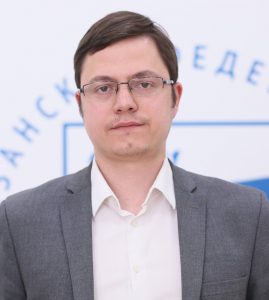
Mikhail Varfolomeev
Candidate of Science in Chemistry, Associate Professor
Chair of the Department of Petroleum Engineering
Member of the Russian Presidential Council on Science and Education (2023 – present)
- Stirred high pressure autoclave with sapphire imaging window (2929 0000 TOP INDUSTRIE, France)
Pressure: 1-40 MPa
Temperature: from -10 °С to +100 °С
Mixing speed: 400 min-1
Volume: 50 ml
Number of leucosapphire windows: 1
Evaluation of hydrate formation in dynamic mode with visualization
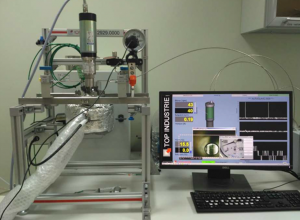
- Stirred high pressure autoclave with sapphire imaging windows (GHA350, PSL Systemtechnik, Germany)
Pressure: 1-35 MPa
Temperature: from -30 °С to +60 °С
Mixing speed: up to 2000 min-1
Volume: 600 ml
Number of leucosapphire windows: 3
Evaluation of hydrate formation in dynamic mode with visualization (тест АА)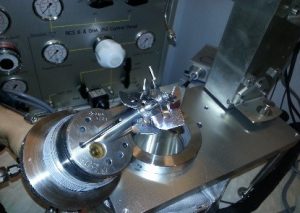
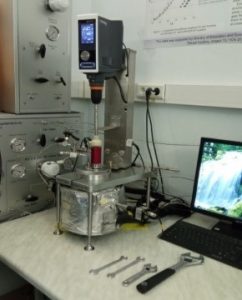
- Stirred and non-stirred autoclaves
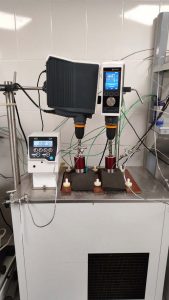
Stirred autoclaves
Pressure up to 200 bar2 agitated autoclave (up to 400 rpm)
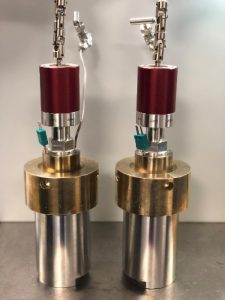
Autoclaves without stirring
Pressure up to 200 bar2 autoclaves with 1-4 thermocouples

- Rocking cell plant RC5 Rocking Cell 5, PSL Systemtechnik GmbH, Germany with cryostat, manifold, gas booster and mass comparator
- Five cells for experiments
Pressure: 20 MPa
Temperature: from -10 0С to +60 0С
Angular range ± 45° with sweep frequency up to 20min-1
Evaluation of hydrate formation in dynamic mode
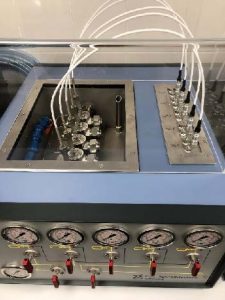
Multi-cell system RC5 (Rocking Cell) from PSL Systemtechnik - Differential scanning calorimetry
-
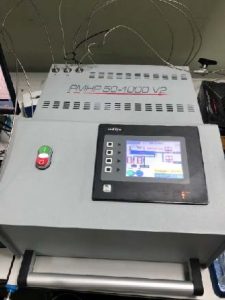
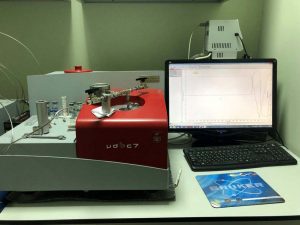
High pressure differential scanning calorimeter (HP µDSC7 evo, Setaram Instrumentation) and gas panel (PMHP 50-1000 V2)
Microcalorimetry from -45°С to 120°С, high pressure up to 1000 bar - PVT equipment
Main characteristics: – volume of a full view PVT cell 400 cm3; – working pressure up to 100 MPa; – working temperature up to 200 °C
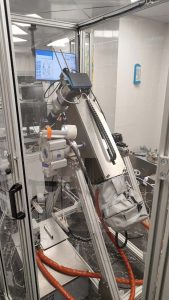

The set of equipment for studying the thermodynamic properties of reservoir fluids consists of the main blocks: · PVT unit with a complete view of the cell and the ability to connect additional devices (gasometer, sampling chamber, viscometer, etc.). The system allows to study reservoir fluids with different gas factor (crude oil, volatile oils, gas condensate mixtures, high pressure gases); · Automatic gasometer for measuring the volume of released gas with a device for temperature control and mixing; · Temperature-controlled trap for determination of gas content; · Installation of preparation of tests before transfer to researches; · Gas transfer system from low pressure containers (gas booster); · Pumps for transfer of tests and management of the auxiliary equipment; High pressure viscometer (measurement of dynamic viscosity by means of a capillary viscometer (100 MPa, 200 °C, 0.3 – 10^4 cP); High pressure density meter; Containers for sampling fluids for chromatography and other auxiliary equipment (- density measurement by means of a digital densitometric cell Anton Paar (140 MPa, 200 °C, 0 – 3 g/cm3). - PVT device components
- Motorized high pressure cell with sapphire window;
- Hydraulic temperature control and maintenance system;
- HD digital video system;
- Automatic stirrer with magnetic drive;
- Swivel mechanism with 180° rotating cell;
- Manipulation system;
- Data storage and management software;
- Precision indicators and valves

